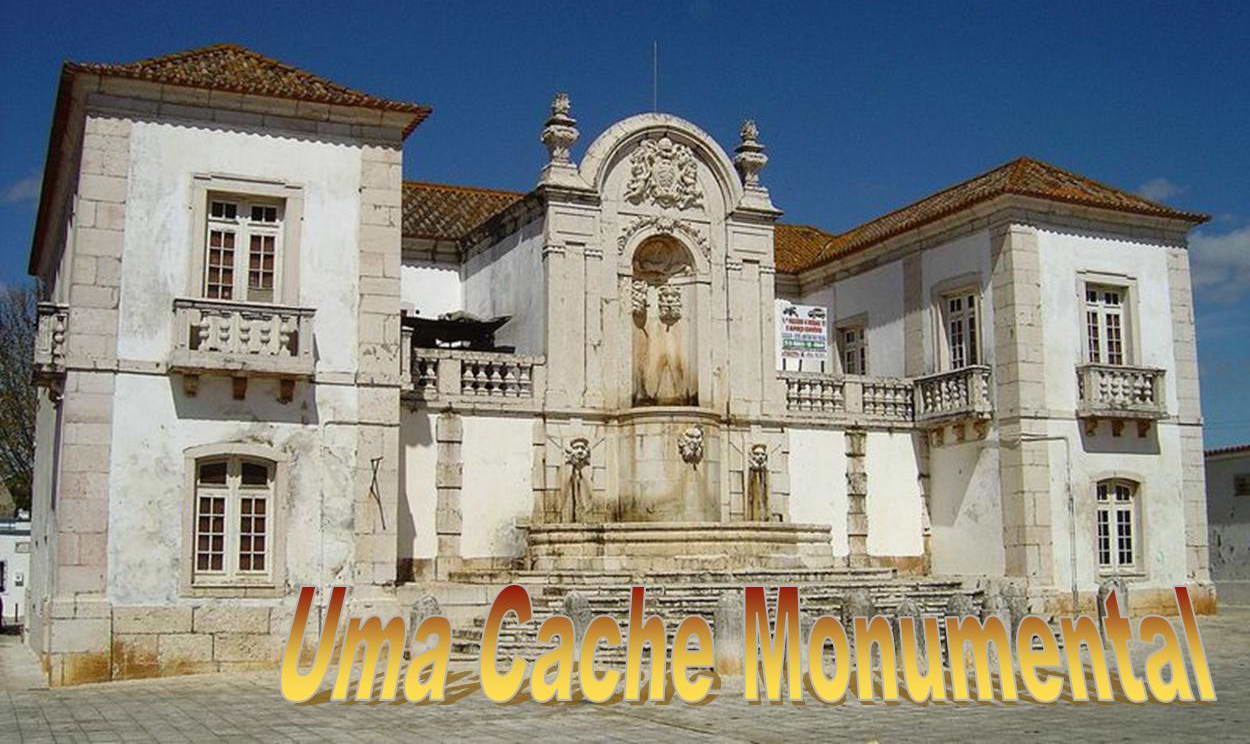
![[PT]](https://imgproxy.geocaching.com/fd803be3bfb7396e826555e469c7752394fb37ae?url=http%3A%2F%2Ffarm1.static.flickr.com%2F212%2F481411265_8928121d68_o.gif) Bem vindo a esta cache que se situa em Santo Antão do Tojal, e que vos dá a conhecer a Fonte Monumental e o seu aqueduto, e o Palácio dos Arcebispos.
Bem vindo a esta cache que se situa em Santo Antão do Tojal, e que vos dá a conhecer a Fonte Monumental e o seu aqueduto, e o Palácio dos Arcebispos.
Santo Antão do Tojal (por vezes chamada de Santo António do Tojal) é uma freguesia do concelho de Loures, com 15,10 km² de área e 4 192 habitantes (2001). Densidade demográfica: 277,6 h/km².
Antigamente chamada Santo António de Santo Antão do Tojal, a povoação é conhecida por ter servido de residência de Verão aos arcebispos (depois Patriarcas de Lisboa), que aqui erigiram o Palácio da Mitra (ou dos Arcebispos).
![[EN]](https://imgproxy.geocaching.com/26dce0e20e21dd7e2c84c6c439fc1ab0a1b1385f?url=http%3A%2F%2Ffarm1.static.flickr.com%2F179%2F481411263_e6595005a4_o.gif) Welcome to this cache that it is placed in Santo Antão of the Tojal, and that gives to you to know the Monumental Fontain and its aqueduct , and the Palace of the Archbishops.
Welcome to this cache that it is placed in Santo Antão of the Tojal, and that gives to you to know the Monumental Fontain and its aqueduct , and the Palace of the Archbishops.
Santo Antão of the Tojal (for times called Santo António of the Tojal) is in Loures, with 15,10 km ² of area and 4 192 inhabitants (2001). Demographic density: 277,6 h/km ².
Old called Santo António de Santo Antão the Tojal, the population is known by having served of residence of Summer the archbishops (later Patriarchs of Lisbon), that here they had erected the Palace of the Miter (or of the Archbishops).
![[PT]](https://imgproxy.geocaching.com/fd803be3bfb7396e826555e469c7752394fb37ae?url=http%3A%2F%2Ffarm1.static.flickr.com%2F212%2F481411265_8928121d68_o.gif) O local
O local
O Palácio
O Palácio da Mitra, vulgarmente conhecido como Palácio dos Arcebispos é uma antiga residência de veraneio, primeiro dos Arcebispos, e depois, dos Patriarcas de Lisboa.
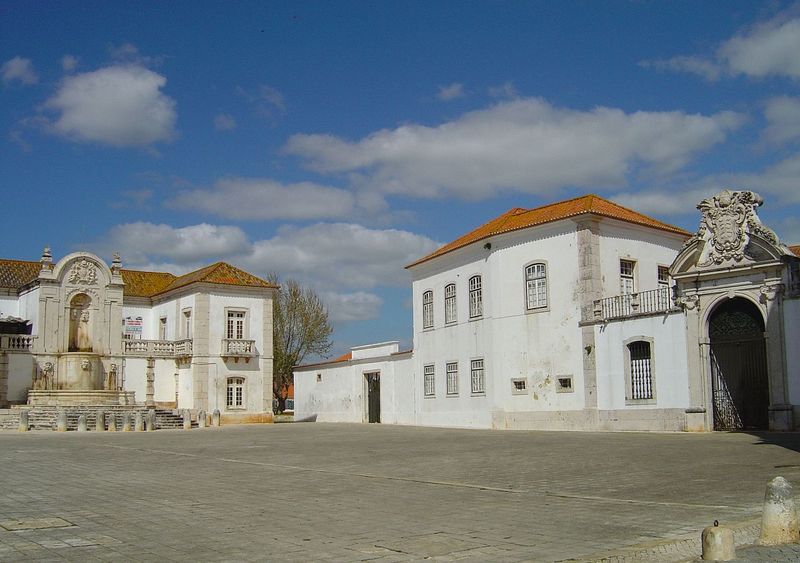
O primitivo palácio foi mandado construir pelo arcebispo D. Fernando de Vasconcelos, cerca de 1554 (sendo este arcebispo também o responsável pela construção da Igreja Matriz de Santo Antão do Tojal). Este palácio, por sua vez, veio substituir uma primitiva casa do século XIII e que pertencia à Mitra de Lisboa. No século XVIII, o primeiro patriarca de Lisboa, D. Tomás de Almeida, mandou reconstruí-lo em estilo barroco, ao gosto da época. O arquitecto responsável pela actual traça foi o italiano Canaveri, que nele trabalhou até 1732.
No princípio do Séc. XVIII D. João V estabeleceu em Portugal um clima de sumptuosidade.
Obteve a dignidade patriarcal para o Arcebispo de Lisboa, e iniciou a construção do Convento de Mafra, viajando muito de Lisboa para Mafra, pelo caminho de Loures.
A Nobreza da região esforçou-se então muito para ter condições de hospedagem que agradassem ao monarca.
O edifício apresenta-se em forma de U; na fachada, de estilo italiano, encontram-se três mármores de Carrara, representando as estátuas de São Bruno de Colónia (o fundador da Cartuxa), a Rainha Santa Isabel e a Imaculada Conceição. No interior, a típica azulejaria portuguesa do século XVIII, em azul e branco, caracteriza-se pela riqueza temática e grande qualidade pictórica (representações das estações do ano, cenas campestres, venatórias ou de pesca, figuras mitológicas; nas cozinhas surgem representados temas culinários). Alguns dos azulejos foram mais tarde trasladados para o Paço Patriarcal de São Vicente de Fora e encontram-se hoje no Museu Nacional de Arte Antiga.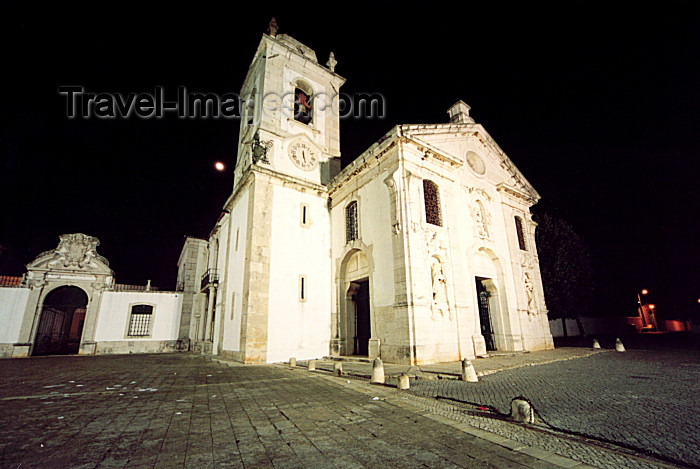
O Palácio inclui ainda dois pombais, um aqueduto com dois quilómetros destinado a abastecer dois chafarizes, um dos quais monumental, tudo construções também do século XVIII.
Ao longo do século XX tem vindo a sofrer várias obras de restauro custeadas pela Direcção-Geral dos Edifícios e Monumentos Nacionais; actualmente, encontram-se sediadas no Palácio da Mitra as instalações da Casa do Gaiato.
O conjunto formado por palácio, aqueduto, pombais, chafarizes, capela e ainda o monumental portão da entrada encontra-se protegido como Imóvel de Interesse Público, pelos decretos n.º 30 762 de 26 de Setembro de 1940 e 32 973 de 18 de Agosto de 1943.
A Quinta anexa ao Palácio é uma quinta rural, para trabalho e produção, mas a parte adjacente foi construída em jardins, onde avultam pomares de laranjeiras entre castanheiros, flores, viveiros de pássaros, fontes de azulejo, estátuas, 2 pombais azulejados e tanques de pedra trabalhada.
Aqueduto / Chafariz / Fonte Monumental
Uma das coisas que surpreende o visitante desta terra é o Aqueduto do Séc XVIII.
Dada a falta de água na Quinta e com o aumento das necessidades de àgua era forçoso arranjá-la. Assim D. Tomás de Almeida mandou erguer uma longa arcaria de 2 Km de comprimento, construída também por Canevari, em 1728, para trazer àgua desde Pinteus até ao Palácio.

Este Aqueduto é, portanto, anterior ao Aqueduto das Aguas Livres, e foi talvez a 1ª obra a ser feita, mesmo antes da construção do Palácio. O Aqueduto alimentava duas fontes muito belas: o chafariz público ao cimo da povoação, e o Chafariz Monumental, disposto ao cimo de uma escadaria de gosto italiano em barroco, constituído pela pia, tanque e bicas, formando um conjunto verdadeiramente monumental.
É este conjunto monumental que vos levo a visitar. Espero que gostem!:)
![[EN]](https://imgproxy.geocaching.com/26dce0e20e21dd7e2c84c6c439fc1ab0a1b1385f?url=http%3A%2F%2Ffarm1.static.flickr.com%2F179%2F481411263_e6595005a4_o.gif) The local
The local
The Palace
The Palace of the Miter, vulgarly known as Palace of the Archbishops is one old residence of summering, first of the Archbishops, and later, of the Patriarchs of Lisbon.
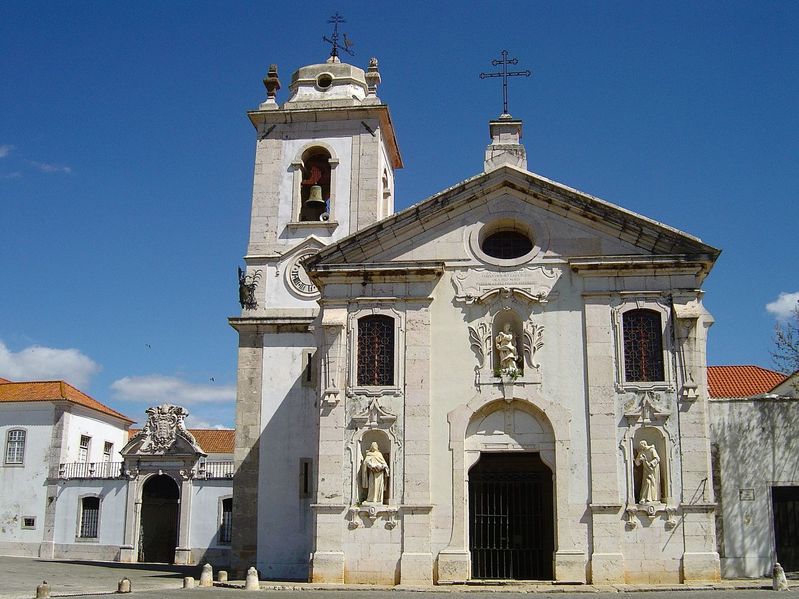 The primitive palace was ordered to construct for archbishop D. Fernando de Vasconcelos, about 1554 (being this archbishop also the responsible one for the construction of the First Church of Santo Antão of the Tojal). This palace, in turn, came to substitute a primitive house of century XIII and that it belonged to the Miter of Lisbon. In century XVIII, the first patriarch of Lisbon, D. Tomás de Almeida, ordered to reconstruct it in baroque style, to the taste of the time. Arquitecto responsible for the current one traces was Canaveri Italian, who in it worked up to 1732.
The primitive palace was ordered to construct for archbishop D. Fernando de Vasconcelos, about 1554 (being this archbishop also the responsible one for the construction of the First Church of Santo Antão of the Tojal). This palace, in turn, came to substitute a primitive house of century XIII and that it belonged to the Miter of Lisbon. In century XVIII, the first patriarch of Lisbon, D. Tomás de Almeida, ordered to reconstruct it in baroque style, to the taste of the time. Arquitecto responsible for the current one traces was Canaveri Italian, who in it worked up to 1732.
In the principle of the Séc. XVIII D. João V established in Portugal a sumptuosidade climate.
It got the patriarcal dignity for the Archbishop of Lisbon, and very initiated the construction of the Convent of Mafra, travelling of Lisbon for Mafra, for the way of Loures.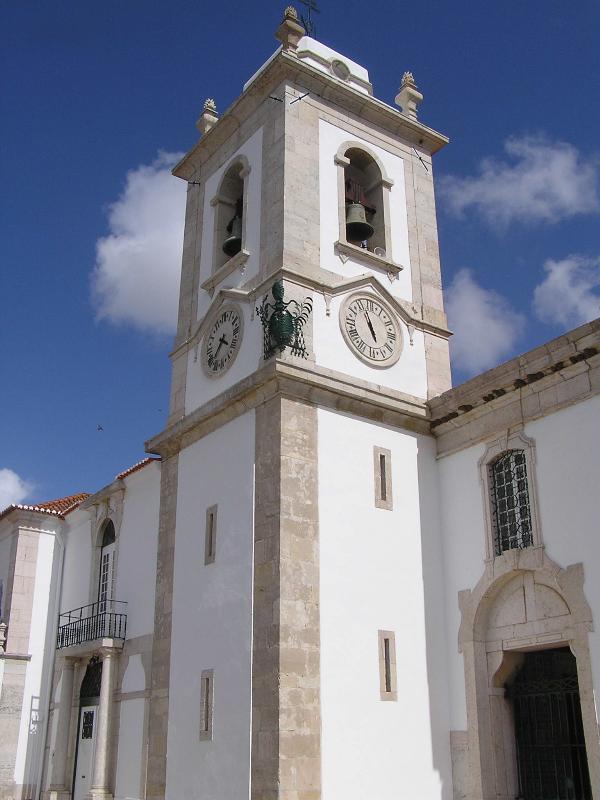
The Nobility of the region strengtove itself very then to have lodging conditions that pleased the monarch.
The building is presented in form of U; in the façade, of Italian style, three marbles of Carrara meet, representing the statues of Are Bruno de Colónia (the founder of the Cartuxa), the Queen Saint Isabel and the Immaculate Conceição. In the interior, the typical Portuguese tiling of century XVIII, in blue and white, characterizes for the thematic wealth and great pictorial quality (representations of the stations of the year, campestres, venatórias scenes or of it fishes, mitológicas figures; in the kitchens they appear represented culinários subjects). Some of tiles later had been transferred for the Paço Patriarcal of Are Vicente de Fora and meet today in the National Museum of Old Art.
The Palace still includes two pigeon houses, an aqueduct with two quilómetros destined to supply two chafarizes, one of which monumental, all constructions also of century XVIII.
Throughout century XX it has come to suffer some workmanships from I restore defrayed by Direcção-Generality of the Buildings and National Monuments; currently, they meet hosted in the Palace of the Miter the installations of the House of the Gaiato.
The set formed for palace, aqueduct, pigeon houses, chafarizes, chapel and still the monumental gate of the entrance meets protecting as Listed property, for decrees n.º 30 762 of 26 of September of 1940 and 32 973 of 18 of August of 1943.
The Fifth attached one to the Palace is a fifth agricultural one, for work and production, but the adjacent part was constructed in gardens, where orchards of laranjeiras between castanheiros avultam, flowers, fisheries of birds, tile sources, statues, 2 azulejados pigeon houses and tanks of worked rock.
Aqueduct/Chafariz/Monumental Fontain
One of the things that surprise the visitor of this land is the Aqueduct of Séc XVIII.
Given the water lack in Fifth and with the increase of the necessities of àgua he was forcible to arrange it. Thus D. Tomás de Almeida ordered to raise a long one would arcaria of 2 km of length, also constructed for Canevari, in 1728, to bring àgua since Pinteus until the o Palace.
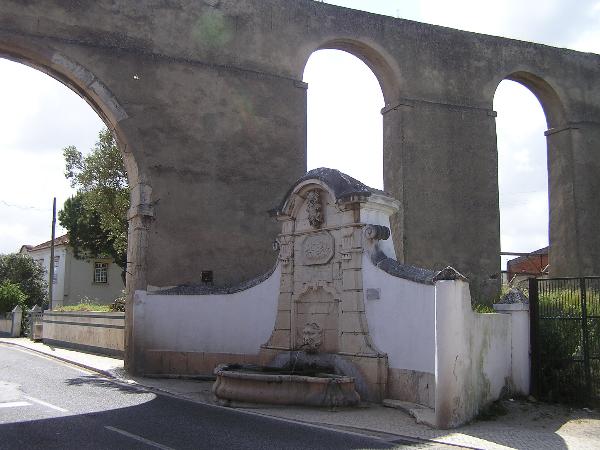

This Aqueduct is, therefore, previous to the Aqueduct of the Aguas Free, and was perhaps 1ª workmanship to be made, same before the construction of the Palace. The Aqueduct fed two beautiful sources very: the public chafariz to the top of a mountain of the population, and the Chafariz Monumental, made use to the top of a mountain of a staircase of Italian taste in baroque, consisting of the sink, tank and pipes, forming a truily monumental set.
It is this monumental set that I take you to visit. I wait that they like:)
![[PT]](https://imgproxy.geocaching.com/fd803be3bfb7396e826555e469c7752394fb37ae?url=http%3A%2F%2Ffarm1.static.flickr.com%2F212%2F481411265_8928121d68_o.gif) Informação Turística
Informação Turística
Realiza-se todos os anos no último fim de semana de Setembro nesta localidade e junto ao Palácio um evento de comemoração do Dia Mundial do Turismo, que consiste numa Feira Setecentista onde dezenas de figurantes vestidos a rigor desfilam com a presença de El-Rei D.João V no seu coche real, assim como o Patriarca D.Tomás de Almeida e o Povo.
Aconselho vivamente todos a visitarem esta cache neste fim de semana pois é um evento único que se realiza no nosso país e ao mesmo tempo que fazem a cache desfrutam deste evento.
![[EN]](https://imgproxy.geocaching.com/26dce0e20e21dd7e2c84c6c439fc1ab0a1b1385f?url=http%3A%2F%2Ffarm1.static.flickr.com%2F179%2F481411263_e6595005a4_o.gif) Touristic information
Touristic information
An event of commemoration of the World-wide Day of the Tourism, that consists of a Setecentista Fair where sets of ten of figurantes dresses the severity parade with the presence of El-King D.João V in real its coche, as well as D.Tomás Patriarch de Almeida and the People is become fullfilled every year in this locality and next to the Palace.
I advise all alive to visit this cache in this weekend therefore is an only event that if carries through in our country and at the same time that they make cache they enjoy of this event.

![[PT]](https://imgproxy.geocaching.com/fd803be3bfb7396e826555e469c7752394fb37ae?url=http%3A%2F%2Ffarm1.static.flickr.com%2F212%2F481411265_8928121d68_o.gif) A Cache
A Cache
Para encontrar esta multi-cache deverá percorrer parte do aqueduto. O ponto inicial corresponde à Fonte Monumental e aí devem contar o número de colunas de pedra que estão na base da escadaria. Esse valor é A.
No segundo ponto que está em N38º 51.330 W009º 08.504 devem contar o número de tanques de lavagem de roupa que ficam em frente ao Chafariz Público (o outro destino da água do aqueduto para além da Fonte Monumental). Esse número é B. Para chegar aqui devem deixar o carro no ponto inicial e seguir à direita da Fonte até à Rua dos Arcos, seguir nessa rua sempre encostado ao aqueduto (é só seguir o caminho pedonal que o segue) até ao segundo ponto.
Para chegar à cache final devem de resolver a seguinte operação: N 38º 51.2(A+46) W 009º 08.4(B+80). Podem seguir a pé até à cache final e voltar depois no final ao ponto inicial pelo mesmo caminho. A caminhada tem cerca de 900m no total.
É fácil, não custa nada. Espero que gostem!:)
Esta cache é um tupperware de tamanho Small de tamanho +/- 15x10x8cm.
Sejam DISCRETOS na procura desta cache, especialmente em dias de muito movimento no local. A cache está ligeiramente disfarçada, não é visível do caminho, terão que pôr a mão por trás para a retirar. Não é necessário mover nada!
Deixe-a exactamente como a encontrou, bem escondida e tapada.
![[EN]](https://imgproxy.geocaching.com/26dce0e20e21dd7e2c84c6c439fc1ab0a1b1385f?url=http%3A%2F%2Ffarm1.static.flickr.com%2F179%2F481411263_e6595005a4_o.gif) The Cache
The Cache
To find this multi-cache it will have to cover part of the aqueduct. The initial point corresponds to the Monumental Source and there they must count the number of rock columns that are in the base of the staircase. This value is A.
In as the point that is in N38º 51,330 W009º 08,504 they must count the number of tanks of laudering of clothes that are in front of the Public Chafariz (the other destination of the water of the aqueduct stops beyond the Monumental Fontain). This number is B. To arrive here they must leave the car in the initial point and follow to the right of the Source until the a Street of the Arcs, to follow in this street always leaned to the aqueduct (it is alone to follow the pedonal way that follows it) until the o according to point.
To arrive at cache final they must decide the following operation: N 38º 51.2(A+46) W 009º 08.4(B+80). You can walk the to final cache and return to the starting point at the end to same way. The walk have more or less 900m.
It is easy, not cost nothing. I wait that they like:)
This cache is one tupperware of small size of size +/- 15x10x8cm.
They are DISCRETE in the search of this cache, speciall in days with many people around. The cache is slightly disguised, is not visible from the road, will have to put your hand back to remove it. There is no need to move anything!
Leave it exactly as it found it, hidden and covered well.
Ah, e não se esqueça nunca/don't forget: Cache In Trash Out!
 ¤ menu > início :: Uma Cache Monumental ¤ menu > início :: Uma Cache Monumental |
translate: 
|
|
|